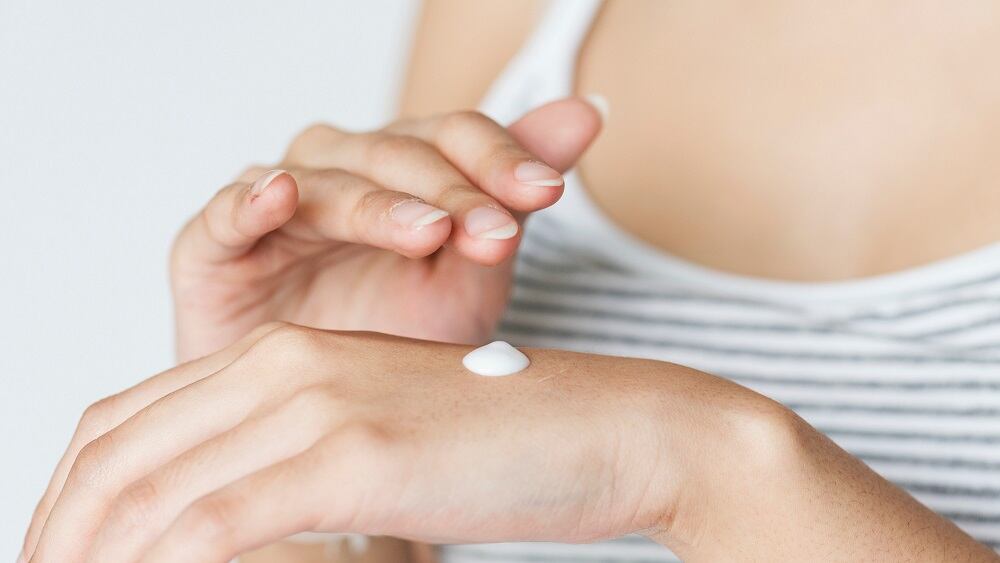1 – Pro-beauty at home: Amorepacific launches ‘home-aesthetic’ brand to meet demand for result-driven cosmetics
South Korean cosmetics conglomerate Amorepacific is scheduled to launch its first ever professional-grade beauty brand Holitual to meet rising consumer desire to have effective skin treatments in the comfort of their home.
Holitual was among one of the four start-up beauty brands showcased by Amorepacific at Cosmoprof Asia this year. This also marked the cosmetics maker’s first time exhibiting at the trade show.
“Holitual is a professional beauty therapy brand that merges latest innovations in skin care with the expertise of aestheticians,” said Jaekyung Yoo of Holitual, Amorepacific.
“This is the first professional beauty brand from Amorepacific but it also meant to be used at home so you can get professional results in your own home.”
The brand will launch in Korea by the end of November the professional and mass market channels. It will launch with five products – a peel, a serum, a mask, ampoule and a face cream – which were meant to mimic the experience of an aesthetic facial treatment.
2 – Bright idea: South Korean fashion firm Michaa enters beauty space with sun care-focused brand
Sisun International, the company behind South Korean apparel retailer Michaa, is looking to expand its business into the cosmetics market with its newly launched sun care brand.
Sun stage was launched less than six months ago and is the company’s second cosmetics brand.
The company officially entered the K-beauty scene in January with a launch of Cure Program.
“We wanted to explore our business in a different category but still closely related to women’s fashion,” said Hyunsik You, business development manager, Sisun International.
You told CosmeticsDesign-Asia that the company did not want Cure Program to be like other conventional make-up or skin care brands in an already saturated South Korean beauty market.
“So, we decided to create a product that can help the retail employees in our fashion stores. They spend the whole day on their feet, so we thought we should create something that could relax their legs,” explained You.
3 – Shampoo containing plant extracts may promote hair growth – South Korean study
A shampoo containing Inula helenium (IH) and Caesalpinia Sappan (CS) extracts may promote hair growth in people with androgenetic alopecia.
Androgenetic alopecia is a common type of hair loss and current available treatments include FDA-approved drugs, like minoxidil and finasteride to promote hair growth. However, they come with adverse drug reactions, such as skin irritation, sexual dysfunction, and circulatory disorders.
Researchers from South Korea tested a scalp shampoo containing IH and CS extracts on people suffering from hair loss, and found it significantly increase total hair count, showing a promising remedy for preventing hair loss and promote hair growth.
The research was published in the journal, Cosmetics.
4 – Forever young? Seniors a promising demographic for K-beauty makeup: Study
Brands looking to expand or launch into the Korean beauty market must consider baby boomers; a rising demographic interested in looking younger and seeking effective yet simple makeup, a study finds.
“With the rapid ageing of the world population and the tendency to focus on appearances, the demand for cosmetics for the elderly is likely to keep rising,” the researcher Baek wrote in the study.
And many international brands were already targeting this generation, with the likes of CoverGirl, L’Oréal, Mac and Shu Uemura among some of the bigger companies working with older but high-profile celebrities and models. Japanese major Shisheido had even developed makeup products specialised for the elderly generation, according to the study.
“Why are these world-class cosmetics brands aggressively marketing their products to the seniors? The reason is that the baby boomers have recently become a new consumer group, joining the economic power of the middle and older generation worldwide,” Baek said. “Relevant industries are already focusing on developing products for them, and this trend involves the cosmetics industry as well.”
5 – M&A activity hints at new realities in the beauty sector
This past week Coty bought a controlling stake in Kylie Cosmetics, The Estée Lauder Companies acquired Korea-based skin care brand Dr Jart+, and Olaplex accepted a private equity deal from Advent International. To get a sense of what these transactions mean for the industry, Cosmetics Design checked in with Kayla Villena, Senior Analyst of Beauty and Fashion at Euromonitor International.
K Beauty continues to be a strong concept globally. For instance, this year LG Household & Health launched their K Beauty brand VDL Cosmetics in North America, and Mediheal launched here in the US market.
Beyond this growth, more and more legacy beauty makers around the world are building and buying Korean beauty brands. In May of 2018, L’Oréal acquired the K Beauty color cosmetics brand Stylenanda; and late that same year, Avon launched a K Beauty collection.
Now, The Estée Lauder Companies have bought into K Beauty with the acquisition of Dr Jart+. As Villena points out, The Estée Lauder Companies have had a stake in the Dr Jart+ brand since 2015. And “the acquisition is quite important because it speaks to two things,” she say, “number one, the strength of K Beauty as a global beauty concept…and to the strength of the Asia Pacific region in general.”





